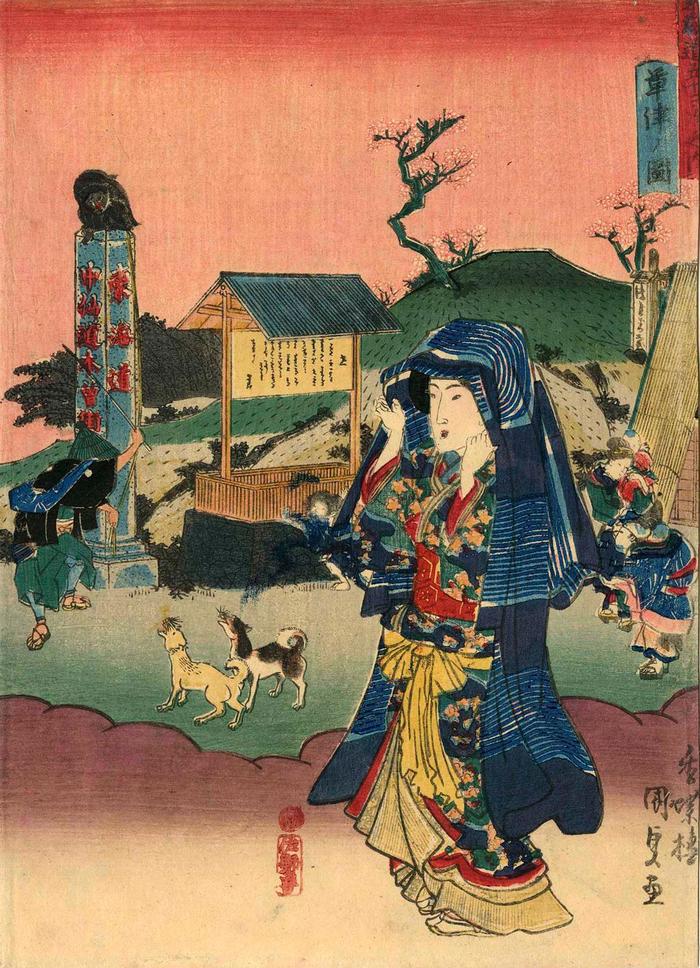Utagawa Kunisada (歌川国貞) / Toyokuni III (三代豊国) (artist 1786 – 01/12/1865)
View of Kusatsu (Kusatsu no zu: 草津ノ図) from the chuban series Fifty-three Stations of the Tōkaidō Road (Tōkaidō gojūsan tsugi no uchi: 東海道五十三次之内)
ca 1838
Signed: Kōchōrō Kunisada ga (香蝶楼国貞画)
Publisher: Sanoya Kihei
Censor's seal: kiwame
Fujisawa Museum of Art
Museum of Fine Arts, Boston
Museum für angewandte Kunst, Vienna
Honolulu Museum of Art
National Diet Library
Spencer Museum of Art
Virginia Museum of Fine Art
Ishikawa Prefectural Museum of Art - they date their copy to 1836
Bryn Mawr This is number 53 in the series.
****
In Hokusai and Hiroshige: Great Japanese Prints from the James A. Michener Collection, Honolulu Academy of Arts on page 216 it says: "Kusatsu was one of the busier stations on the Tōkaidō Road. Here two important highways, the Tōkaidō and Kiso roads, diverged and converged."
****
The curatorial files of the Museum für angewandte Kunst in Vienna state in a Google language translation from the German: "The picture of the Kusatsu Station station in the background was conceived by Kunisada himself and shows the station at the point where the two highways Tōkaidō and Kisokaidō (also called Nakasendō) intersect. The stone pillar on the left shows the names of the two country roads. On the pillar sits a black monkey (saru), who apparently fled there. Its owner scares away the curious children and barking dogs. In the foreground is a woman who has pulled one of her robes over her head. That was one of the ways to protect yourself from dirt, sun and prying eyes. She tied up her kimono with lots of flowers with a simple yellow sash to protect it from the dirt on the street."
****
There is no corresponding Hiroshige template for this Kunisada print. In Tokaido Landscapes: The Path from Hiroshige to Contemporary Artists, 2011, #53, p. 66, speaking of the original Hiroshige print it says in a text by Sasaki Moritoshi: "Kusatsu was the junction between the Tōkaidō and the Nakasendō, the road that ran through the mountains to Edo; the Yabase Road branched off from this spot toward Lake Biwa. At this crossroads was a shop selling ubagamochi, a kind of rice cake for which Kusatsu was famous; signs on the shop advertise the sweet. This shop was a teahouse as well as a rest stop for those traveling the road. Hiroshige depicted the bustling shop in detail, evoking for the viewer the pleasure of eating this local specialty..."
****
Illustrated in a small color reproduction in Kunisada's Tokaido: Riddles in Japanese Woodblock Prints by Andreas Marks, Hotei Publishing, 2013, page 75 and a larger reproduction on page 77, T24-53.
Sanoya Kihei (佐野屋喜兵衛) (publisher)
landscape prints (fūkeiga 風景画) (genre)
